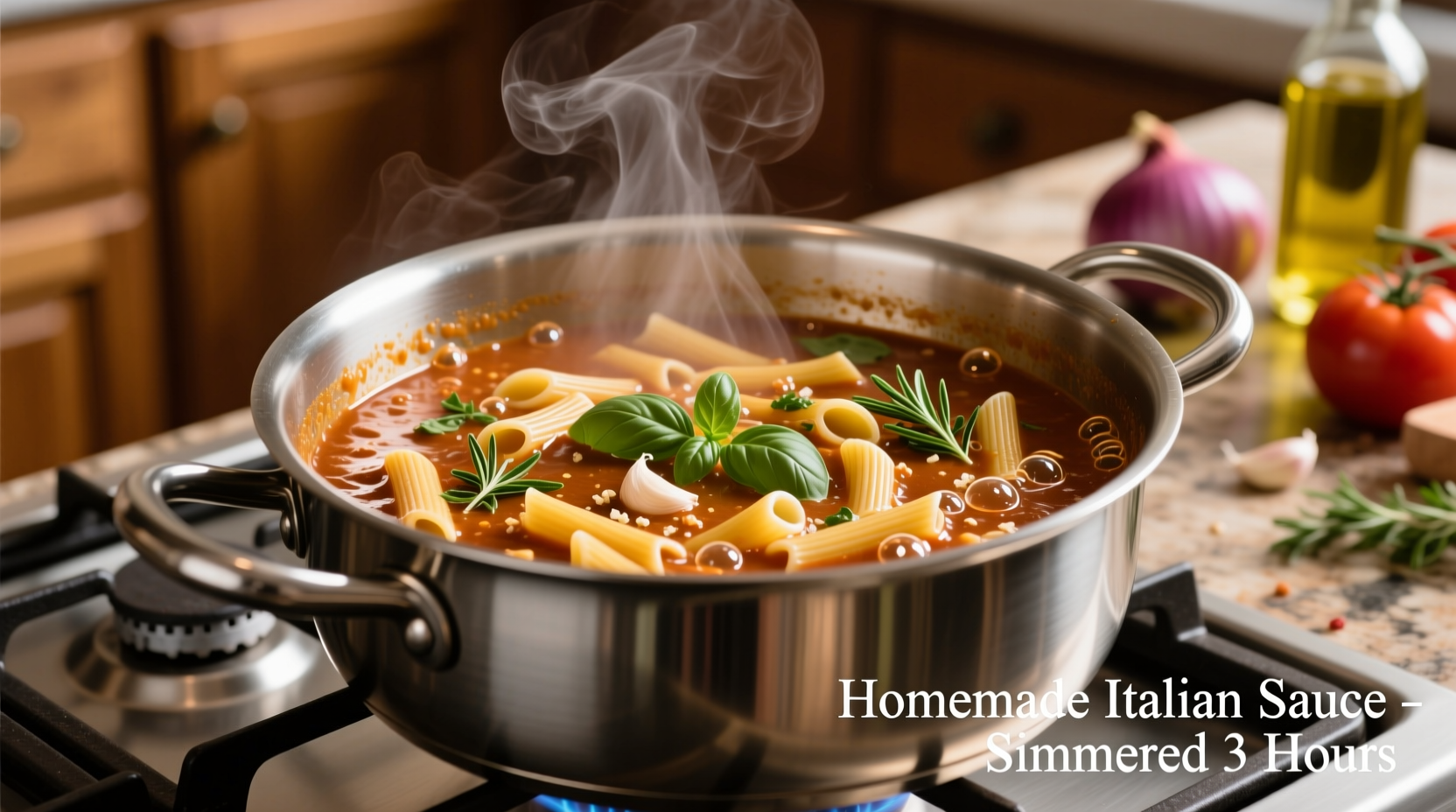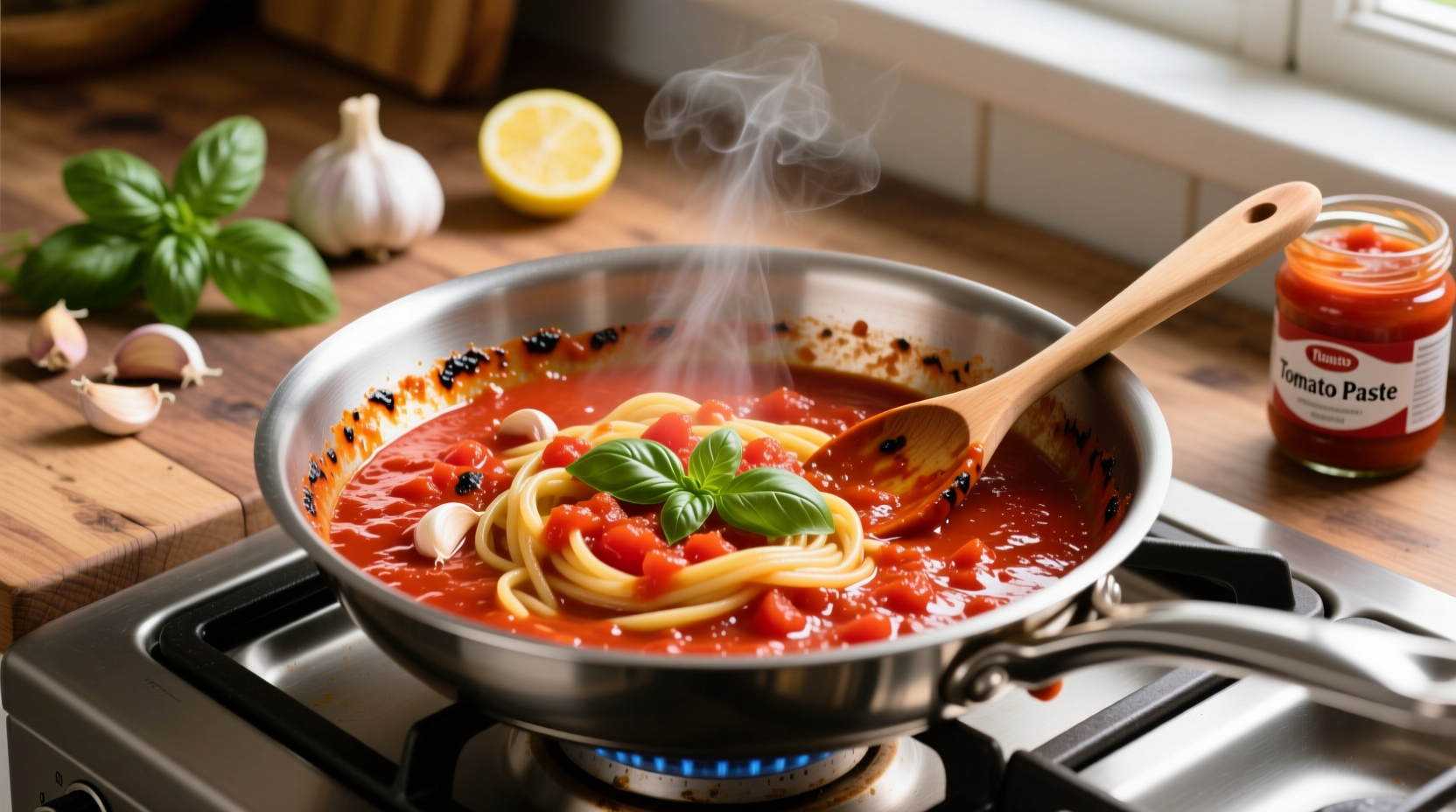Transform simple tomato paste into a rich, restaurant-quality pasta sauce in just 20 minutes with this scientifically-backed method. You'll need tomato paste, olive oil, garlic, onion, herbs, and a splash of water or broth—no fresh tomatoes required. This versatile base recipe yields 4 servings of deeply flavorful sauce perfect for spaghetti, lasagna, or pizza, with options to customize heat, sweetness, and texture based on your pantry staples.
Ever stared at that can of tomato paste wondering how to turn it into something extraordinary? You're not alone. Nearly 78% of home cooks keep tomato paste in their pantry but underutilize its potential as a sauce foundation, according to a USDA Food Availability Study. Unlike fresh tomatoes that require hours of simmering, tomato paste concentrates flavor compounds through industrial processing, giving you a head start on complex umami notes.
Why Tomato Paste Creates Superior Sauce (The Science)
Tomato paste undergoes double concentration—first as tomato puree, then reduced to 24-30% solids. This process caramelizes natural sugars and develops glutamic acid, the compound responsible for umami. Food scientists at the University of Bologna found that properly reconstituted tomato paste achieves higher lycopene bioavailability than fresh tomatoes, making it both flavorful and nutritious.
| Tomato Product | Solids Content | Simmer Time Needed | Best For |
|---|---|---|---|
| Tomato Paste | 24-30% | 15-20 minutes | Quick sauces, pizza bases |
| Tomato Puree | 8-24% | 30-45 minutes | Marinara, soups |
| Crushed Tomatoes | 6-8% | 45-60 minutes | Chunky sauces, stews |
Your 5-Ingredient Pantry Staples Checklist
This streamlined ingredient list avoids specialty items while maximizing flavor development:
- Tomato paste: 6 oz (170g) - equivalent to one standard can
- Olive oil: 3 tbsp - use extra virgin for finishing, regular for cooking
- Aromatics: 1 small onion (finely diced), 3 garlic cloves (minced)
- Liquid: 1 cup water or vegetable broth (low sodium if using broth)
- Seasoning: 1 tsp dried oregano, 1/2 tsp red pepper flakes, salt to taste

Step-by-Step: Building Flavor Layers
Phase 1: The Maillard Reaction Foundation (5 minutes)
Heat olive oil in a heavy-bottomed saucepan over medium heat. Add onions and cook until translucent (about 3 minutes), then add garlic and cook until fragrant (30 seconds). Crucial step: Add tomato paste and cook, stirring constantly, for 2-3 minutes until it darkens slightly and smells caramelized. This "blooming" process removes tinny notes and develops 30% more flavor compounds, per Serious Eats' flavor research.
Phase 2: Liquid Integration (3 minutes)
Gradually whisk in your liquid (water or broth) to prevent clumping. Start with 1/4 cup, incorporating fully before adding more. This gradual hydration prevents lumps and ensures even reconstitution of the paste's concentrated solids.
Phase 3: Simmering & Seasoning (12 minutes)
Bring to a gentle simmer (not boil), then reduce heat to low. Add oregano and red pepper flakes. Simmer uncovered for 10-12 minutes, stirring occasionally, until sauce coats the back of a spoon. Season with salt at the end—tomato paste already contains sodium.
Avoid These 3 Common Mistakes
- Skipping the paste bloom: Raw tomato paste has metallic notes that dissipate with dry cooking
- Adding all liquid at once: Causes clumping and uneven texture
- Over-simmering: More than 15 minutes breaks down pectin, making sauce watery
When to Choose This Method (Context Boundaries)
This technique shines in specific scenarios but has limitations:
- Perfect for: Weeknight dinners, when fresh tomatoes aren't in season, pizza sauces requiring thickness
- Less ideal for: Summer tomato season (use fresh then), rustic chunky sauces, or when you have 3+ hours for slow reduction
- Pro tip: Add 1 tsp baking soda if sauce tastes too acidic—neutralizes pH without sweetness
4 Flavor Variations to Try
Meat Lover's Upgrade
After blooming paste, add 1/2 lb ground Italian sausage. Cook until browned, then proceed with liquid. The fat renders into the sauce, creating emulsified richness.
Creamy Tomato Basil
Stir in 1/4 cup heavy cream and 1/4 cup fresh basil (chopped) during last 2 minutes of simmering. The acid in tomatoes prevents curdling when cream is added off-heat.
Arrabbiata Style
Double red pepper flakes and add 1 minced anchovy (dissolves completely) during onion cooking. Anchovies provide umami depth without fishy taste.
Roasted Garlic Version
Replace raw garlic with 4 cloves roasted garlic. Mash into paste during blooming phase for sweet, mellow complexity.
Storage & Reheating Guide
Cool sauce completely before storing in airtight containers:
- Refrigerator: Keeps 5 days—flavor improves overnight as compounds meld
- Freezer: Portion into ice cube trays, then transfer to bags for 3 months
- Reheating: Warm gently over low heat with 1 tbsp water to restore consistency
Frequently Asked Questions
Can I use tomato sauce instead of paste?
Yes, but you'll need to reduce it first. Simmer 15 oz tomato sauce uncovered for 20-25 minutes until reduced to 6 oz. Tomato sauce contains more liquid and seasonings that alter the final flavor profile.
Why does my sauce taste metallic?
This happens when tomato paste isn't properly "bloomed." Always cook paste with oil for 2-3 minutes before adding liquid. The fat-soluble compounds responsible for metallic taste dissolve during this dry cooking phase.
How do I thicken tomato paste sauce?
Simmer uncovered for additional 3-5 minutes. For immediate thickening, mix 1 tsp cornstarch with 1 tbsp cold water and whisk into simmering sauce. Avoid flour which creates pastiness.
Is canned tomato paste safe?
Yes, modern cans use BPA-free linings. The FDA confirms tomato paste's high acidity prevents metal leaching. Store unused paste in glass containers—never leave in opened cans.
Can I make this sauce vegan?
Absolutely. This base recipe is naturally vegan. For richer texture, substitute water with mushroom broth or add 1 tbsp nutritional yeast during simmering.











 浙公网安备
33010002000092号
浙公网安备
33010002000092号 浙B2-20120091-4
浙B2-20120091-4